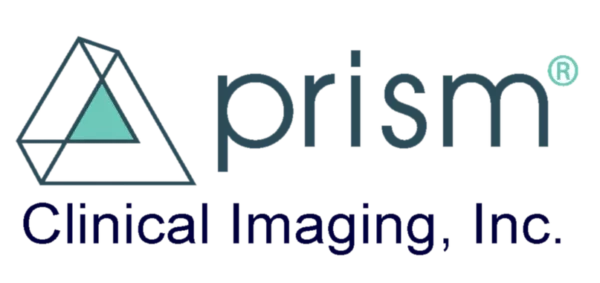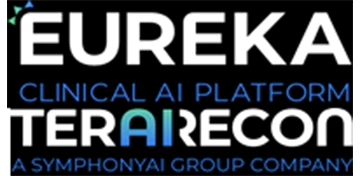IB Resources
IB Webinars

Neuro-Oncology Publications
Relative Cerebral Blood Volume Maps Corrected for Contrast Agent Extravasation Significantly Correlate with Glioma Tumor Grade, Whereas Uncorrected Maps Do Not
Boxerman JL, Schmainda KM, Weisskoff RM
This seminal paper demonstrated that leakage‑corrected rCBV maps (accounting for contrast extravasation) significantly correlate with WHO glioma grade, whereas uncorrected maps underestimate perfusion in higher‑grade tumors. It underpins modern DSC‑based FTB mapping by highlighting the need for robust leakage correction before thresholding voxels for tumor burden.
Standardization of relative cerebral blood volume (rCBV) image maps for ease of both inter- and intrapatient comparisons
Bedekar D, Jensen T, Schmainda KM
Introduces a patented standardization algorithm (now part of IB Neuro) that converts vendor‑specific rCBV outputs into a common scale. This ensures that FTB thresholds can be applied uniformly across scanners, patients, and timepoints—crucial for longitudinal monitoring and multicenter studies.
Repeatability of Standardized and Normalized Relative CBV in Patients with Newly Diagnosed Glioblastoma
Prah MA, et al.
Compares “normalized” (ratio to normal‑appearing white matter) versus “standardized” rCBV. Standardized rCBV showed superior within‑subject repeatability (lower variability), reinforcing its value for reliable FTB map generation in newly diagnosed GBM.
Moving Toward a Consensus DSC-MRI Protocol: Validation of a Low-Flip Angle Single-Dose Option as a Reference Standard for Brain Tumors
Boxerman JL, et al.
This study demonstrates that Fractional Tumor Burden (FTB) maps derived from dynamic susceptibility contrast MRI—using a low flip angle and 50% less gadolinium—can accurately differentiate active tumor from treatment-related effects in glioblastoma. By enabling voxel-level quantification of tumor heterogeneity with reduced contrast exposure, FTB maps offer a safer, more precise imaging biomarker for guiding clinical decisions and improving response assessment.
Dynamic susceptibility contrast MRI measures of relative cerebral blood volume as a prognostic marker for overall survival in recurrent glioblastoma: results from the ACRIN 6677/RTOG 0625 multicenter trial
Schmainda KM, et al.
In this large multicenter trial, changes in thresholded rCBV (i.e., FTB) after salvage therapy were independently predictive of overall survival. This validated FTB mapping as a robust biomarker in the recurrent GBM setting.
ACRIN 6684: Assessment of Tumor Hypoxia in Newly Diagnosed Glioblastoma Using 18F-FMISO PET and MRI
Gerstner ER, et al.
Correlates DSC‑derived perfusion metrics (including standardized rCBV) with PET‑measured hypoxia. Demonstrates that higher perfusion heterogeneity and volume (key inputs to FTB) align with regions of hypoxia—another hallmark of aggressive tumor.
Spatial discrimination of glioblastoma and treatment effect with histologically-validated perfusion and diffusion magnetic resonance imaging metrics
Prah MA, et al.
Uses co‑registered biopsy samples to show that DSC‑FTB maps accurately localize viable tumor vs. treatment‑effect zones within the same enhancing lesion. This “ground‑truth” validation supports clinical decision‑making for resection and re‑irradiation planning.
Impact of Software Modeling on the Accuracy of Perfusion MRI in Glioma
Hu LS, et al.
Compares multiple DSC post‑processing pipelines (including IB Neuro) and finds that software modeling choices (e.g., leakage correction, AIF selection) significantly influence rCBV accuracy. Validates the need for a validated, end‑to‑end platform like IB Neuro to generate reproducible FTB maps.
Arterial Spin-Labeling and DSC Perfusion Metrics Improve Agreement in Neuroradiologists’ Clinical Interpretations of Posttreatment High-Grade Glioma Surveillance MR Imaging-An Institutional Experience
Iv, M, et al.
This study demonstrates that Fractional Tumor Burden (FTB) maps derived from advanced MRI can significantly improve differentiation between active tumor and treatment-related effects in glioblastoma patients. By providing voxel-level quantification of tumor heterogeneity, FTB maps enhance diagnostic confidence and support more informed clinical decision-making in neuro-oncology.
Advanced Imaging in the Diagnosis and Response Assessment of High-Grade Glioma: AJR Expert Panel Narrative Review
Hu LS, Smits M, Kaufmann TJ, et al.
This study highlights how standardized, quantitative MRI—including Fractional Tumor Burden (FTB) maps—improves diagnostic accuracy in glioblastoma by distinguishing active tumor from treatment-related effects. By enabling reproducible, voxel-level analysis across institutions, these tools support more consistent clinical decision-making and enhance the reliability of imaging biomarkers in neuro-oncology.
Consensus recommendations for a dynamic susceptibility contrast MRI protocol for use in high-grade gliomas
Schmainda, KM, et al.
This publication presents consensus recommendations for standardizing dynamic susceptibility contrast (DSC) MRI protocols in brain tumor imaging, developed by the DSC-MRI Standardization Subcommittee of the Jumpstarting Brain Tumor Drug Development Coalition. It outlines evidence-based best practices—including contrast dosing, pulse sequence selection, and post-processing techniques—to improve accuracy and consistency in cerebral blood volume measurements across clinical trials.
IB Video Archive

Partners




